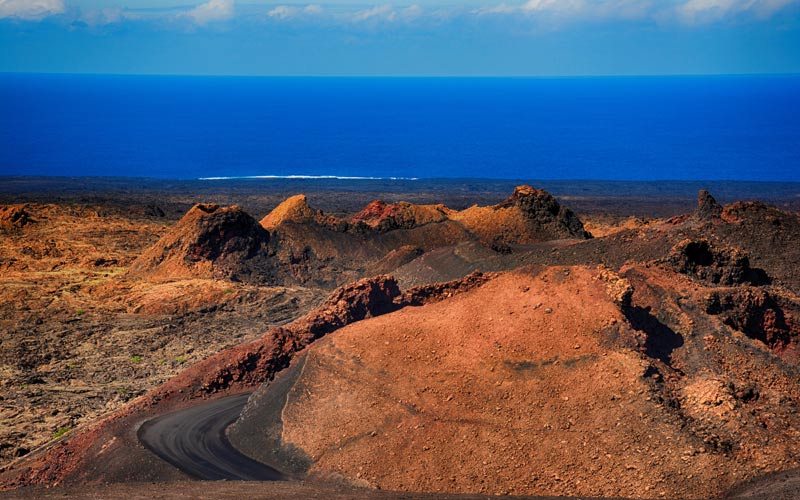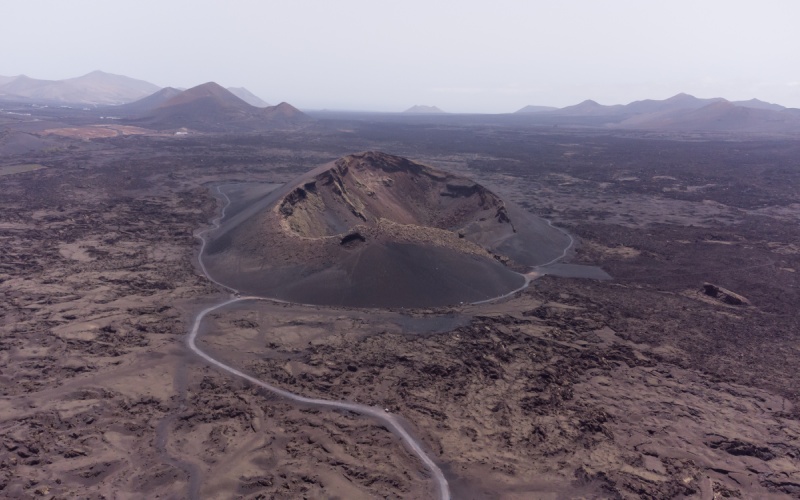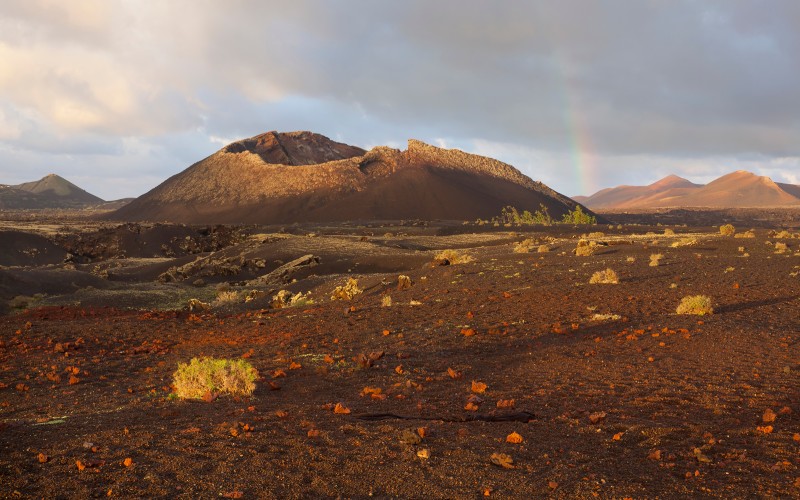
1 September 1730, a date that Lanzarote has well engraved in its chronicles. Between nine and ten o’clock at night on that day, three centuries ago, one of the most decisive volcanic eruptions in the island‘s history took place. What is now known as Timanfaya National Park, which has more than 25 volcanoes, woke up. The lava that spread over the island in the following years would change it completely.

Timanfaya National Park. | Shutterstock
With these words Andrés Lorenzo Curbelo was able to describe what was happening in Lanzarote during those confusing days. The parish priest of the town of Yaiza probably did not know it, but his chronicles would serve centuries later to understand not only what happened but also the current morphology of the island. ‘On the 1st of September 1730, between nine and ten o’clock at night, the earth opened up in Timanfaya, two leagues from Yaiza’, he wrote, and then added: ‘and an enormous mountain rose from the bosom of the earth’.
It was the Cuervo volcano that was first responsible for what happened. Today, you can see the open crater left by the lava explosion. Today it forms part of one of the most popular routes in the park, but three centuries ago it was a disgrace that forced its inhabitants to abandon their homes.
‘On the first night, a huge mountain rose from the bosom of the earth and from the apex flames escaped and continued to burn for nineteen days,’ wrote the parish priest. Crow Volcano was the first to explode, but it was not the only one. The vast majority of neighbouring volcanoes followed in its footsteps.

El Cuervo volcano. | Shutterstock
Although the eruptions seemed to have ceased, just a month later there was another major volcanic eruption. Once again, Lorenzo Curbelo recorded it: ‘three new openings were formed above Santa Catalina, which are still burning and from their orifices masses of thick smoke are escaping, which spread over the whole island, with a large amount of slag, sand and ash which spread all around, with drops of water falling from all points in the form of rain. The thunder and explosions that accompanied these phenomena, the darkness produced by the mass of ashes and the smoke that covered the island forced the inhabitants of Yaiza to flee more than once, returning very soon, because these detonations were not accompanied by other phenomena of devastation’.
These episodes continued, intermittently and with varying force, until 1736. Six decisive years in which the lava flowed across the island of Lanzarote, reaching the ocean itself. Scientists believe that the lava entered the waters until it reached the surface of the island. Today, its traces can be seen in the Timanfaya National Park. This phenomenon, which lasted six years, changed Lanzarote.

This is how impressive is the environment of the Timanfaya National Park. | Shutterstock
In an article published in the scientific journal Science of the Total Environment, it was revealed that the effect of these volcanic eruptions, due to their strength and constancy, is not only felt on the island of Lanzarote and its surroundings. After a long process of research, it was revealed that the chemical trace of the gases they released into the atmosphere can still be identified today in the oldest coniferous forests of the Pyrenees. This phenomenon reached the Pyrenees.
There has never been another explosion of this calibre on the beautiful island of Lanzarote, which has never been the same after this. The volcanoes of the Canary Islands are one of their main attractions, but history always reminds us that they are also a dangerous force of nature.